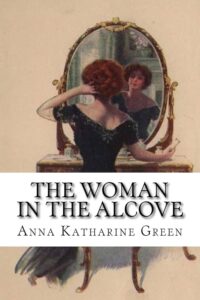The Woman in the Alcove
XV -The woman in the Alcove
byIn Chapter XV of “The Woman in the Alcove,” the tension between the inspector and the narrator deepens as they discuss the mysterious figures, Sears and Wellgood, in relation to Mrs. Fairbrother’s murder. The inspector shares a detailed description of Sears, hoping it might prompt the narrator’s memory, but the description doesn’t align well with her brief recollection of Wellgood, further complicating their investigation. The variability in witness accounts about Wellgood’s appearance frustrates their ability to pin down his identity and connect him conclusively to the crime.
The inspector reveals a broad range of public participation in the investigation, mentioning how many have sent in writing samples hoping to match the note sent to Mrs. Fairbrother before her death. This influx of community engagement, while noteworthy, has not substantially pushed the investigation forward. The key elements—Mrs. Fairbrother’s diamond, the stiletto with the Grey family crest, and the mysterious warning note—remain central puzzles. Despite the inspector’s attempts to refocus on these clues, the narrator can’t shake her suspicions about Mr. Grey’s involvement.
The narrator’s insistence on questioning Mr. Grey’s actions and motives dominates their discussion. She theorizes about the possibility of Mr. Grey orchestrating the crime to obtain the diamond for his collection, suggesting he may have employed Wellgood or Sears to facilitate the diamond’s theft. The inspector, while patient, finds her theory speculative and hard to substantiate. He emphasizes that without concrete evidence or connections between Mr. Grey and the suspects, her suspicions remain conjectural.
Despite the inspector’s skepticism, he acknowledges the complexity of the case and the multiple avenues still to be explored. He hints that any proven link between Mr. Grey and the suspects could dramatically change the investigation’s direction. However, he cautions the narrator on the thinness of her theory and encourages her to concentrate on her duties, subtly suggesting that her personal feelings may be clouding her judgment.
As the chapter concludes, the interaction between the narrator and the inspector reflects the intricacies of the investigation and the emotional toll it takes on those involved. The entanglement of personal convictions with the quest for justice illustrates the difficulties inherent in untangling truth from a web of evidence, memory, and suspicion.



0 Comments